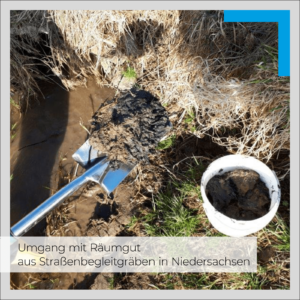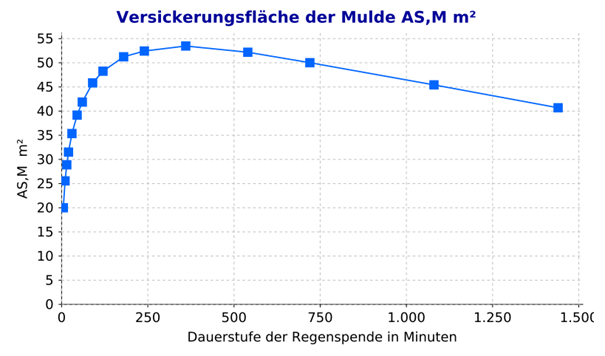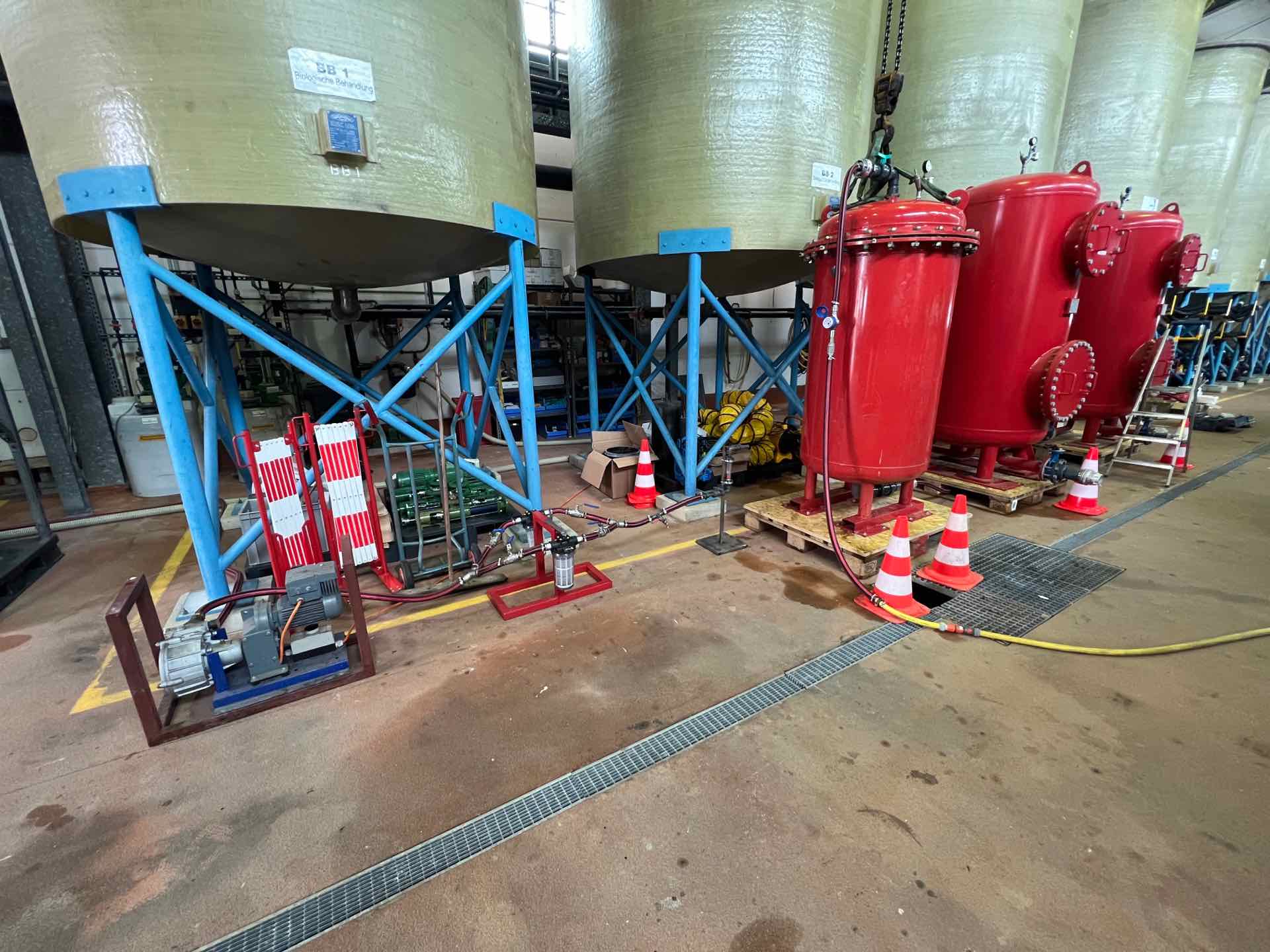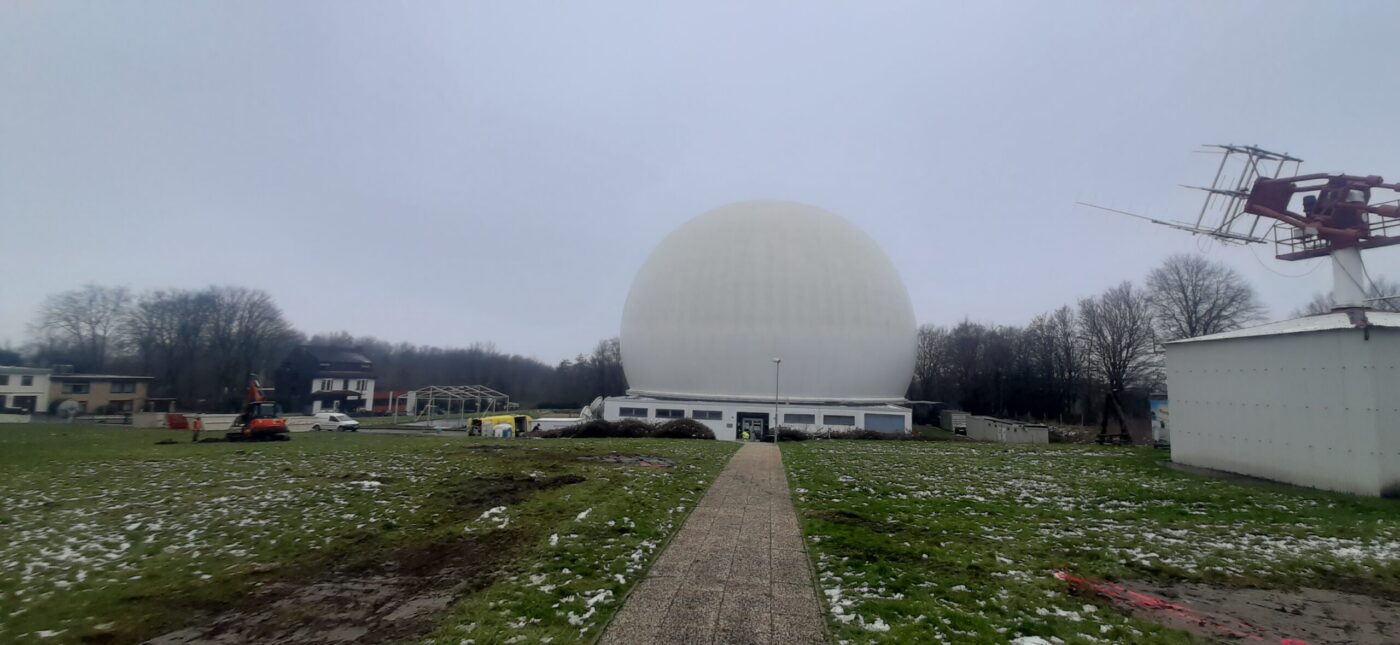

NEWS: During the maintenance of drainage ditches along roads, clearing material is produced that can be contaminated with pollutants typical of road traffic. The cleared material (sediments and plant components) has so far mainly been deposited permanently on the edge of the watercourse. An analysis for pollutants and disposal planning is not yet required by law.
With regard to compliance with waste and soil protection requirements, the Lower Saxony Ministry for the Environment, Energy and Climate Protection distinguishes between two case constellations.
| Case constellations for handling clearance material |
| 1. clearing material remains in the water system |
| If the cleared material is not removed from the watercourse system (including verges) during the maintenance of watercourses - including ditches - this does not constitute disposal within the meaning of Section 3 (1) KrWG. The cleared material may be deposited on the edge of the watercourse in order to maintain the watercourse status authorised under water law. The overall measure has the effect of permanently maintaining the condition regulated under water law in a natural dynamic system (MU decree of 21 November 2012 "Waste law requirements for handling clearing material from watercourse maintenance" (Ref. 36-62820/17)). |
| 2. clearing material is removed from the water system. |
| In the case of clearing material from trenches accompanying motorways, it must be assumed that the contamination is typical for traffic. The sediment must be analysed prior to clearing. Excavated soil intended for reinstallation at the place of origin in accordance with § 12 BBodSchV must be analysed, especially if there are indications of anthropogenic or geogenic contamination. Depending on the intended method of disposal, the density of testing must be agreed with the Lower Water Authority or the Lower Soil Protection Authority of the district.
Sampling should be based on the roughly determined mass of the cleared material. If spreading on agricultural land is planned, this is a utilisation in or on a root-penetrable soil layer. In this case, 70 % of the precautionary values of the BBodSchV must be complied with on the target area. The permissibility of the procedure must be clarified with the Lower Soil Protection Authority of the respective district. |
Find out more about our work and projects and follow us: ![]()
![]()
![]()
![]()
#mullundpartner #engineeringforabettertomorrow #Räumgut #Straßenbegleitgraben #Abfall







